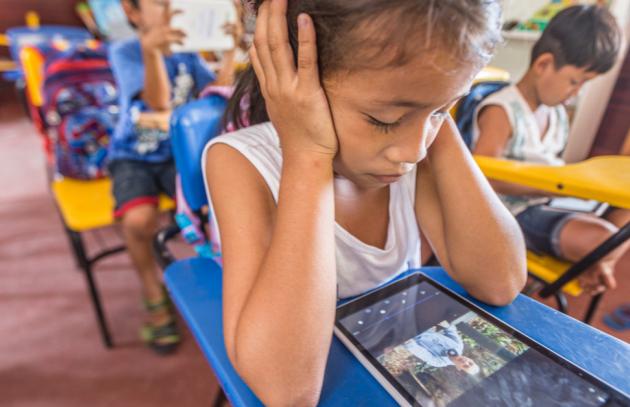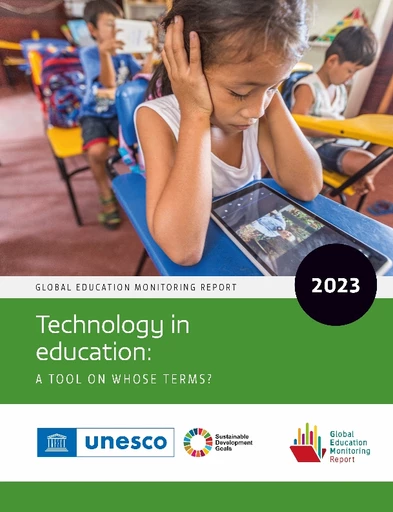c_ismael_martinez_sanchez-8308_1.jpg

At its best, digital technologies can help build a more equitable and sustainable future. The 2023 GEM Report on technology and education, launched on 26 July 2023, similarly makes the case that, when used responsibly, digital technologies can help unlock the transformative power of education.
However, the journey has had many twists and turns. Over the years, technology has been seen as a threat, a pedagogical distraction, but also a panacea capable to solve a myriad of educational challenges. Today, the global education community embraces an overall more nuanced and balanced view – digital technology ushers in countless opportunities for new learning models, but also serious challenges that must be addressed to promote greater inclusion and equity.
The presence of technology in education today is unavoidable. In a post-pandemic context, we have learned that students are more likely to learn with technology than without it - especially in vulnerable and emergency contexts. It is also permeating the world of planning and management - the so-called behind-the-scenes of education. It is influencing how education systems are designed and redrawing the parameters for how educational administrations function.
When implemented at a macro level, technology has the capacity to produce significant impacts in education systems, offering tools and solutions that streamline processes and improve the efficiency of institutions.”
-Martín Benavides, IIEP-UNESCO Director
3 ways technology can enhance planning
At IIEP, we have been working with countries to include technology in educational planning and management. From improved data collection to better transparency, here’s where we are seeing an impact in and through our work with ministries of education and their partners.
1. Technology can improve efficiency in the planning and management of education systems, including more equitable use of resources.
In countries worldwide, IIEP’s technical teams are seeing how technology can boost an Education Management Information System – or EMIS - the most important source of educational data. Technology can support everything from the collection, integration, processing, and maintenance, to the dissemination of data and information to improve decision-making, analysis, and policy formulation. EMIS is also key to monitoring progress toward educational goals and targets, both at the national and international levels.
Technology can also help create projections and modelling to manage the allocation of human and material resources. It can help planners find gaps in access to resources (e.g. teacher gaps in rural contexts) and fill them effectively and can help with time management. Tools such as context-specific school calendars, taking into account environmental and social variables (e.g. rainy seasons and harvest times) help to promote equity.
2. Technology can enhance transparency in the functioning of education.
Technology can provide open access to relevant information about how an education system functions, such as student performance reports. It can help construction open overnment where stakeholders can participate in formulating public policies and monitoring.
3. Technology can boost professional development.
Just like for teachers, technology is also used for the professional development of planners. Online learning platforms and communities of practice can provide resources that support peer-to-peer learning, the acquisition of new skills, and the dissemination of best practices.
These examples illustrate how digital tools in education reach far beyond classrooms. It can help planners do their jobs better and more efficiently, offering new pathways to improving educational quality and equity, now and in the future.
However, as the GEM report on technology and education explores, clear objectives and principles are needed to ensure that the use of technology avoids harm. To do this, it is crucial to understand some of the key challenges facing the integration of technology and its appropriate use in education today.
The challenge of access
Access is often the first challenge many think of when it comes to technology in education. Despite progress, the lack of equitable access to education in many regions of the world exacerbates educational inequalities, both at the individual and systemic levels.
The GEM report notes that, globally, only 40% of primary schools, 50% of lower secondary, and 65% of upper secondary schools have access to the Internet.
Additionally, learning gaps run the risk of widening as long as education systems exist without access to the necessary infrastructure, e.g., devices or connectivity.
During COVID-19, for example, a paradoxical situation arose: on the one hand, digital technologies helped to mitigate the effects of social isolation and made educational continuity possible. However, in their absence, socio-educational inequalities deepened.
To ensure that technologies do not lead to new inequalities, it is essential to promote and revitalize Internet access policies to ensure inclusion and equality in education, i.e. by placing vulnerable populations at the centre of policies.
The challenge of managing and maintaining technology
Technology is generally a private offering and this can complicate management processes in education. The diversity of suppliers is a factor, as choosing the right technology can be complex, especially when considering cost, quality, interoperability, and adaptability to specific educational needs.
Another frequent blind spot is placing an excessive focus on the procurement of devices and software without adequate consideration of how they align with the goals and needs of the education system, as well as the overarching digital transformation policies of states.
In terms of maintenance, the right infrastructure and technical support need to be in place to ensure that solutions function well, as seemingly prosaic factors, such as insufficient connectivity or lack of maintenance, can hinder their effective use.
To overcome these challenges related to technology management, spaces for dialogue with stakeholders must be fostered so that consensus can be built on the benefits and goals of integrating technology, robust mechanisms for evaluation, monitoring and learning, and committed institutional leadership.
In addition, the creation of specific public-private partnerships can achieve greater transparency in educational technology management processes.
The challenge of developing digital skills
The availability of technology does not necessarily guarantee its use. Just as the integration of digital technologies goes beyond the classroom, the challenge of developing digital competencies goes beyond students and teachers and must extend to all actors involved in the educational environment. Families, managers, and policy-makers must be included in this scheme to ensure that all actors can effectively contribute to the use of technology in the educational context and promote a digital culture in society at large.
What’s next?
Let’s focus on Latin America and the Caribbean, where despite more than two decades of integrating various types of digital policies, a deep learning crisis remains. Drawing on its Regional Forum on Education Policies, IIEP has put forward a number of recommendations to further exploit the use of technology in planning and management - with an equity lens.
First, sufficient resources are critical to finance educational change. To have a robust public education system that can close gaps and give everyone at least a minimum of opportunities to learn, constant investment is needed. But some countries fail to do this, either entirely or partially, often because of a lack of coordination or political will.
Second, it is critical to foster cross-sectoral coordination of education ministries with other government sectors. Many learning problems, especially those linked to conditions of extreme poverty, violence, or marginalization, cannot be solved by education policies alone.
Third, there must be a dialogue between the government and society as a whole. The more distant education policy decisions are from the multiple actors in the system, the less sustainable they will be.
Finally, to avoid having policies become distorted or diluted when they reach schools, there should be better articulation between central-level policy-making and district levels. This will help connect the dots in the transmission chain, making digital technologies a smoother journey for all.







